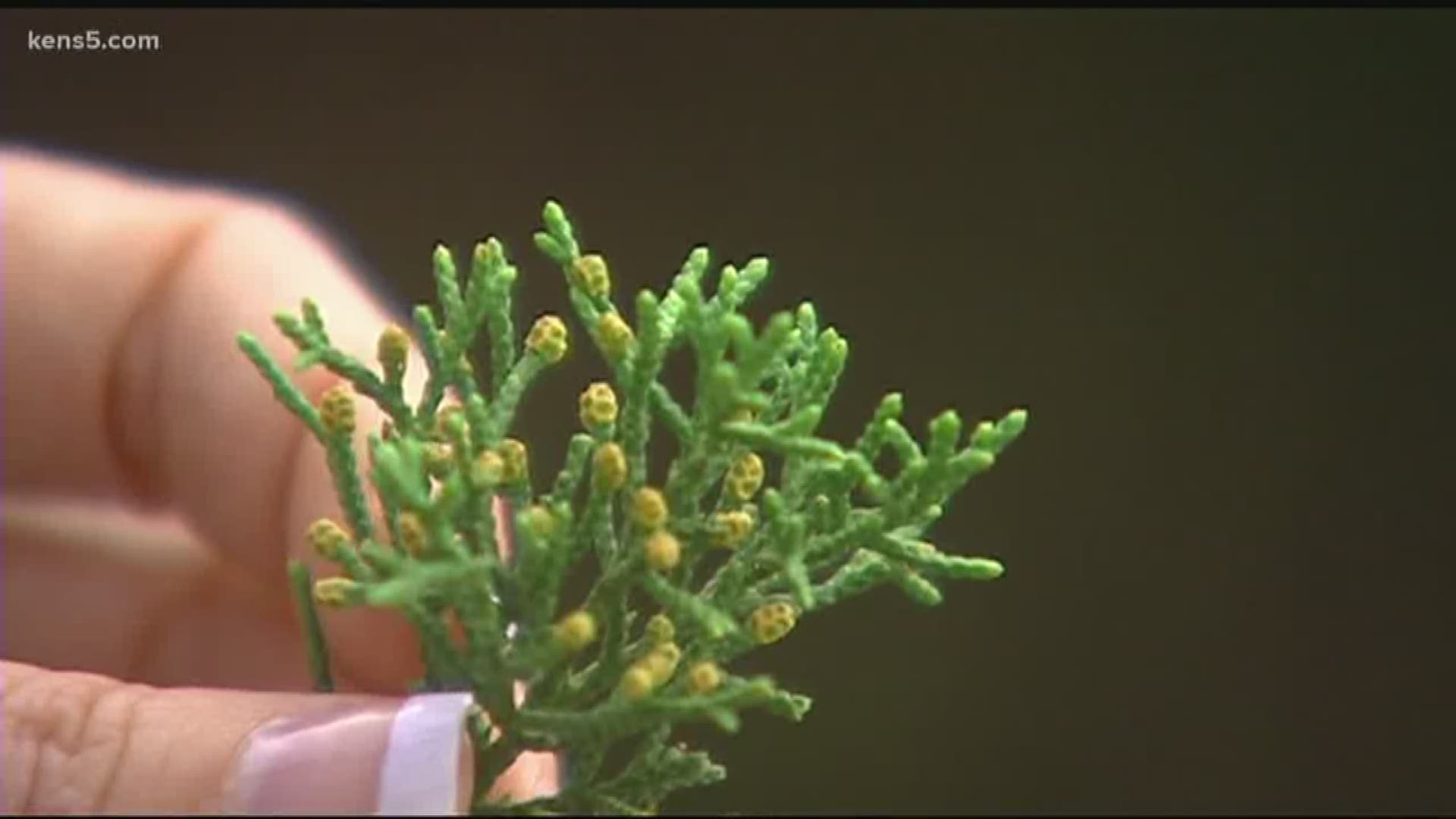The peak of Mountain Cedar season is here! Much of the Alamo City is sniffling and sneezing because the pollen count is through the roof, at a very heavy 31,800.
The ash juniper is the culprit. The orange-brown ones are the "male" trees, and they're the ones that pollinate and make us miserable.
"I feel like I got run over by a dump truck and I just can't breathe," said Elizabeth Shreve. It's a growing feeling shared by many as San Antonio's population booms. More people are moving here like Shreve who arrived in the Alamo City in 2011. She said, "Eight months later I found out I was highly allergic to cedar."
"Initially they won't have symptoms because it takes up to a year for you to develop allergies to mountain cedar," said Dr. Erika Gonzalez, the Medical Director of South Texas Allergy and Asthma Medical Professionals.
So if you just moved here, cedar fever may still be lurking around the corner for you!"Mountain cedar season can start as early as late November and it will run through usually we say about Valentine's Day but it can even extend into March," said Shannon Syring, the clinical trials manager at Sylvana Research.
"Pollen counts are measured using a device called a volumetric sampler. Pollen particles are drawn into the sampler and land on an adhesive coated microscope slide. Each day the number of grains are physically counted under a microscope. Based on that number and a mathematical equation, the pollen count can be determined. That number tells us how many of those particles are found in a cubic foot of air. Getting to that number can be a painstaking process. Syring said, "This morning because it was so high, it took about 30 minutes because I had to count every pollen grain on that period of time on the timestamp."
That high number means more suffering, and experts say if you know you're allergic, start taking your meds early. Dr. Gonzalez told us, "About two weeks before the season actually begins. The reason for that is it takes a while for these medicines to start working."

